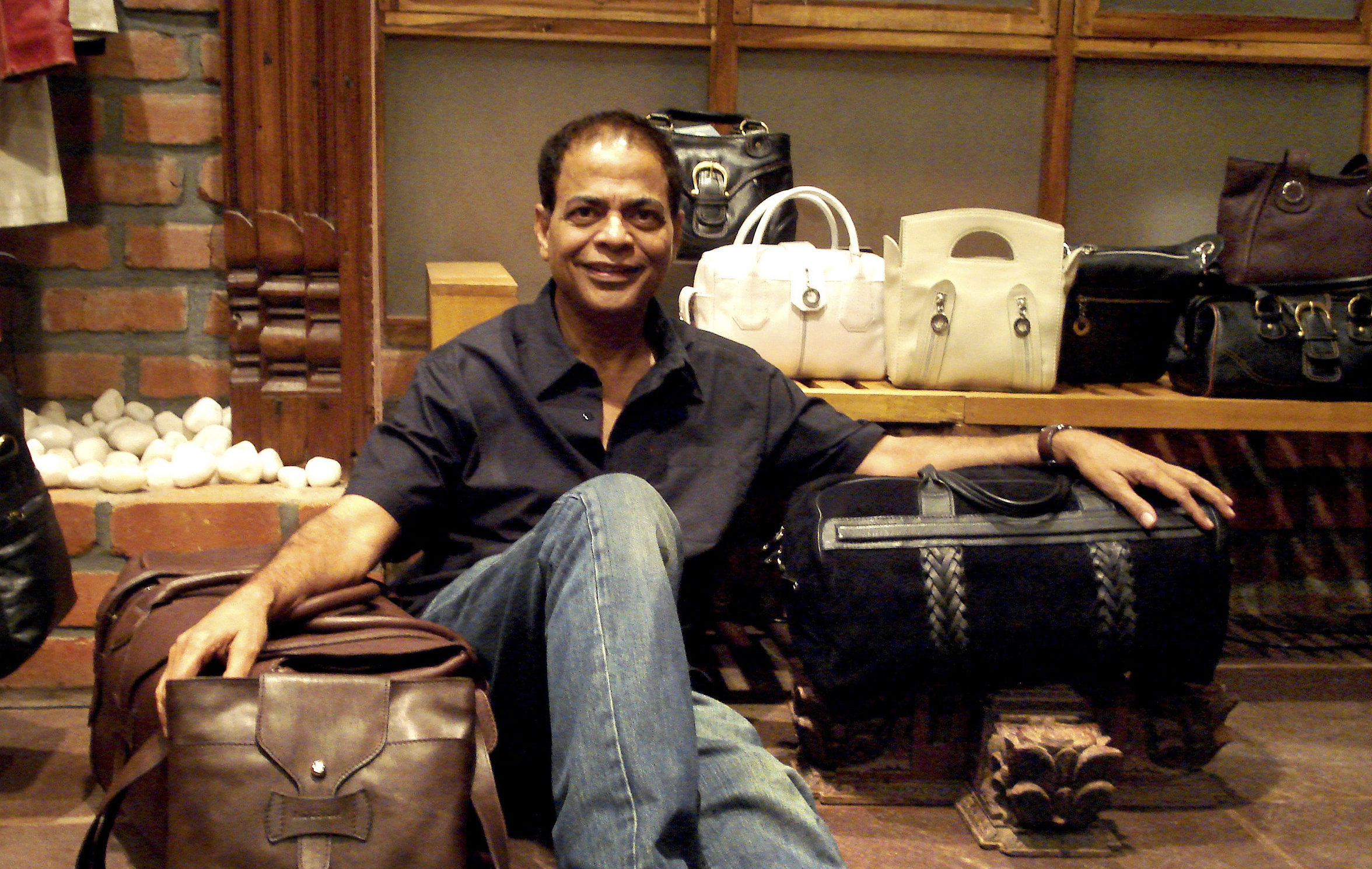In 1977. Dilip Kapur, fresh from his Ph.D. in International Affairs, after years of being a hippie in the United States, returned to India. 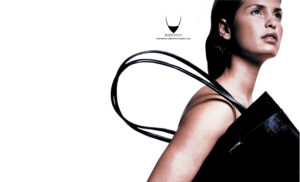 But it was to create a utopia of world harmony at Auroville, Puducherry and to follow his hobby of designing and creating leather bags. The first bags were different from those being created in Europe and the United States at the time. In this issue of S&A , we lay down the brand’s history.
But it was to create a utopia of world harmony at Auroville, Puducherry and to follow his hobby of designing and creating leather bags. The first bags were different from those being created in Europe and the United States at the time. In this issue of S&A , we lay down the brand’s history.
In Pondicherry, the French left a legacy of tall, cool colonial buildings, creativity and cosmopolitanism. One was Sri Aurobindo Ashram and Auroville have brought a continuous stream of rebels, freedom fighters, hippies and spiritual seekers in search of world harmony. This international mingling with a hospitable and warm Tamil society created an innovative population of artists, craftsmen and dreamers that continues to inspire Hidesign to be creative and outward-looking towards the world. Today the iconic brand turns 40, and its founder Dilip Kapur shares with us its history and the success of the brand.
Inspiration
Dilip first met Yves as the President of Louis Vuitton at Le Dupleix, Hidesign’s first atelier. Spontaneously and unexpectedly, he generously offered to share the talents and more than 150 years of experience of the most admired luxury brand in the world. He made Dilip aware that great brands take decades to build, that the journey and story of every brand is unique and precious.
A rebel is born
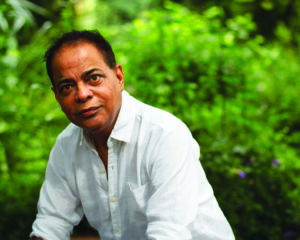
In 1977. Dilip, fresh from his Ph.D. in International Affairs, after years of being a hippie in the United States, returned to India. He was back to create a utopia of world harmony at Auroville, and to follow his hobby of designing and creating leather bags. The first bags were different from anything being created in Europe and the United States at the time. They were natural and ecological, the products of skilful craftsmanship; they convey a message of freedom, equality and non-discrimination. The bags hit the counter-culture stores of San Francisco, London and Melbourne and immediately established an underground reputation for being radically different.
Relaunching Iconic Bags
Its earliest bags were a small range of innovative bags that were a pure expression of adventure, travel, clean design, wonderful materials that felt good, and a non-conformity that was stamped throughout the collection. As it has grown with large collections and teams of marketing and design professionals, it still looks back at its icon bags with great love as being the purest Hidesign bags. The Icon Collection relaunches the earliest bags, maintaining the same purity reflected in the original bags: vegetable-tanned leathers, solid brass, cotton and leather linings, and designs that have stood the test of time for the last 35 years.
Vegetable-tanned leathers
The brand has always admired the beautiful patina of old vegetable-tanned leathers, with a natural variation in colour and the brilliant gloss of used leathers. It sees hand colouring leather as an art, and when done with skill, the leather glows softly in shades that are darker or lighter but never uniform. Dilip was taught to hand colour each natural hide by a Florentine master. 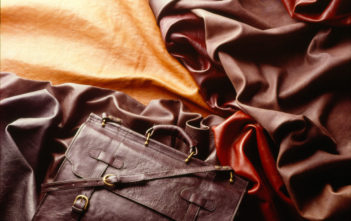 The brand’s leathers are individually hand-coloured with a brush and polished with waxes. They have the same glow and natural tone we admire in museum masterpieces; they follow the same tradition of lovingly rubbing each leather individually.
The brand’s leathers are individually hand-coloured with a brush and polished with waxes. They have the same glow and natural tone we admire in museum masterpieces; they follow the same tradition of lovingly rubbing each leather individually.
E.I. Leather
When he first started working with leather in Denver, USA, he was told the rare leather imported from a premium UK supplier was ‘E.I. leather’, the finest vegetable-tanned leather for hand colouring. The leather has a luminous blond colour that no other vegetable or chemically tanned leather is able to replicate. The leather is strong and has a lively bounce.
E.I. leather was considered the finest leather for luxury footwear and bags in the UK and Italy.
To his surprise, further research showed that E.I. stood for ‘East India’, and the leather originated less than 100 miles from his home town of Pondicherry. The distinctive quality of E.I. leather came from the use of barks, seeds and oils native to South Indian mountains and forests — and of course, from a knowledge and craft perfected and handed down from generation to generation over centuries. The art consists of soaking hides for 40 days in wattle bark and myrobalan seeds, and then rubbing the tanned leathers with pungam oil, a native oil that makes the leather supple.
His excitement that the finest leather in the world came from my native area led me, on his return to India, to search for the source of this special leather. To his great disappointment, tanner after tanner that he visited informed him they had stopped using the E.I. process and shifted to a new, more modern process of chrome tanning. As in Europe and the United States, most tanneries had dropped E.I. leather in favour of chemically tanned leather in order to minimise costs and time, and due to a shortage of skilled craftsmen.
The disastrous results were apparent around all the tanneries. Where tannery waste water had once nurtured surrounding fields, now these areas were poisoned deserts with a high incidence of cancer and skin disease. Farmers and tanners, tanneries and the environment, once bound together in a symbiotic and mutually beneficial relationship, were now enemies.
Thus began his search to find the last remaining skilled tanners of E.I. leather and to dedicate Hidesign to research more innovative methods of tanning, based firmly on a heritage that had once created the greatest leather in the world. It’s been an adventurous journey of collaborative innovation with the keepers of one of the world’s greatest traditions. This quest has established Hidesign as a leader in the newly fashionable area of ‘ecological tanning’.
Love for Brass
Though brass is the preferred metal for many Indian gods, it is rarely used for buckles and other bag fittings. The painstaking job of individually polishing a brass buckle is too complicated, time-consuming and expensive for most companies. 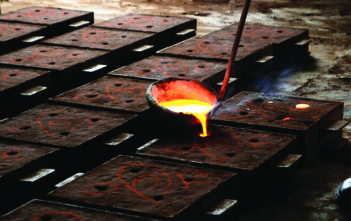 Yet when faced with the choice of using either zinc alloy or steel buckles that have been electroplated to resemble brass, Hidesign decided to rediscover the art of brass buckles through the master craftsmen in Indian temple towns. These masters continue to sandcast every buckle, hand filing and polishing them on soft cloth brushes as if they were sculptures of the gods. After all, the brand expects its bags to last as long as a brass sculpture.
Yet when faced with the choice of using either zinc alloy or steel buckles that have been electroplated to resemble brass, Hidesign decided to rediscover the art of brass buckles through the master craftsmen in Indian temple towns. These masters continue to sandcast every buckle, hand filing and polishing them on soft cloth brushes as if they were sculptures of the gods. After all, the brand expects its bags to last as long as a brass sculpture.
Equality and Freedom
The cultural revolution of the 1960s was a rebellious mix of politics, music and style. As the rebels got older, they turned their energies to business, and created new forms of enterprise that continued to uphold the original values of social and political freedom and equality. 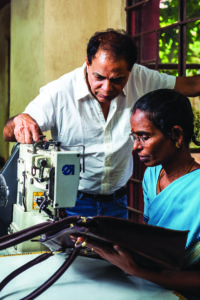 Hidesign has always attempted a similar blend of business and social values. Dilip Kapur was the founder of the Third World Liberation Front at Princeton University, and his activism at the time bred in him a great dislike for racism, apartheid or discrimination of any kind. Hidesign’s first advertisements and visuals reflected this merger of politics and fashion.
Hidesign has always attempted a similar blend of business and social values. Dilip Kapur was the founder of the Third World Liberation Front at Princeton University, and his activism at the time bred in him a great dislike for racism, apartheid or discrimination of any kind. Hidesign’s first advertisements and visuals reflected this merger of politics and fashion.
First Ad
The brand’s first advertisement, showing a naked black sailor and a white girl, was deeply controversial and banned from many shops and the media. But the advertisement was an instant hit. The 1970s and 1980s saw Hidesign bags become a cult brand among the highly fashionable customers of Castro Street and Haight-Ashbury in San Francisco, Portobello Road in London, and the alter native stores in Melbourne. It was not until the 1980s that Hidesign first broke into mainstream stores in London.
Its beautiful image of Mr. South Africa drew howls of protests across the conservative world of retail and the media. 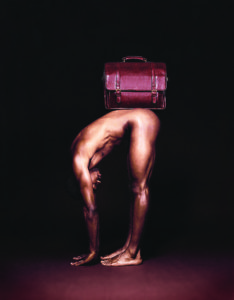 It was too controversial for the newly free South Africa. It was banned outright in Dubai and Abu Dhabi. In India, Hidesign was hauled up before the Press Council and accused of being obscene. But the image did lead to an award for ‘Best Accessory Campaign’ of the year in Europe and India. The brand thinks ‘Black is Beautiful’; after all, it is the quality of the skin that matters, not the colour.
It was too controversial for the newly free South Africa. It was banned outright in Dubai and Abu Dhabi. In India, Hidesign was hauled up before the Press Council and accused of being obscene. But the image did lead to an award for ‘Best Accessory Campaign’ of the year in Europe and India. The brand thinks ‘Black is Beautiful’; after all, it is the quality of the skin that matters, not the colour.
New Kid in the Block
In the 1980s fashion world, full of pedigreed Italian and French bags, Hidesign bags stood out, not only for their earthy naturalness and rebellious political message, but even more because they were made in India. An Indian brand that had a distinct identity: unique in its design, its emotional commitment to ecology and its insistence on using a great, natural leather that was older than any European leather.
Hidesign was establishing itself as a unique hybrid brand. On the one hand, it was relying on craftsmanship from the Indian cobbler caste, and using brass casting and traditional East India leather. Hidesign’s cultural identity was clearly linked to the cultural revolutions that swept through the Western world in the 1960s. Initially, the brand had no Indian market. Cut off from the world by a closed, socialist economy, Hidesign’s home country missed out on the great changes in western social, sexual, music and political norms. For its first seventeen years, Hidesign sold successfully in urban centres of dynamic fashion leadership: San Francisco, New York, Boston, London and Melbourne. The end of apartheid in South Africa saw Hidesign grow in Johannesburg and Cape Town. The fall of the Communist Government in the Soviet Union saw Hidesign’s first shop open in Moscow, and since then it has rapidly expanded to seven stores in Russia.
Coming Home
The opening up of the Indian economy saw hundreds of thousands of Indians discover the world of fashion as they went to study, trade and shop in the West. The year 1990 saw Hidesign open its first store in India, in its small home town of Pondicherry, followed by stores in Mumbai and Delhi. In nine years of rapid growth, Hidesign discovered a love affair with India. 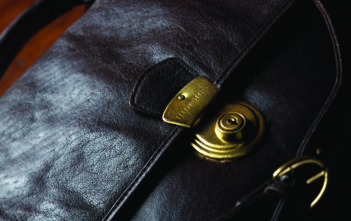 India is now its biggest market, having surpassed the United Kingdom in 2009. Hidesign is no longer just a western brand; today it is expanding in India, Malaysia, Russia and Sri Lanka. Hidesign has become part of the incredible change sweeping across Asia. This is an adventure that has only just begun.
India is now its biggest market, having surpassed the United Kingdom in 2009. Hidesign is no longer just a western brand; today it is expanding in India, Malaysia, Russia and Sri Lanka. Hidesign has become part of the incredible change sweeping across Asia. This is an adventure that has only just begun.
There is no mass production, no assembly line. Every bag is individually numbered, hand cut and put together by groups of three or four people. Its campus is artisanal, and training is through a long apprenticeship with a master craftsman. While the design specifications are extensive and detailed, every craftsman has a distinctive style of ‘constructing’ the perfect bag.
Social Intervention
The Indian caste system has placed cobblers at the bottom of the social system, among untouchables and outcastes. Trapped in a single skill set and job, they were traditionally at the mercy of higher caste landlords. But the cobblers’ inherited understanding and love of leather, fine-tuned to perfection over the centuries, makes them the finest pool of skilled leather workers in the world. Those who work at Hidesign feel freed from social imprisonment, encouraged to educate their children, and empowered to join the great Indian rush towards prosperity and freedom.
A small coconut thatch hut, a clean mat on the floor for seating, a foot-pedal sewing machine, a large black flat stone, a sharp knife: this is the context in which Dilip learned from the cobbler Murugan, who was the first person to join Hidesign. 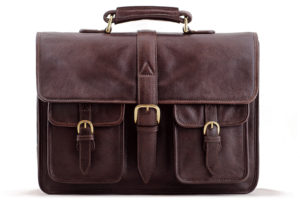 Murugan taught him the art of working with leather, skills he had inherited over generations. He was the most famous cobbler in Pondicherry, an illiterate artist who could create beautiful patterns, a perfectionist who knew every aspect of leather work.
Murugan taught him the art of working with leather, skills he had inherited over generations. He was the most famous cobbler in Pondicherry, an illiterate artist who could create beautiful patterns, a perfectionist who knew every aspect of leather work.
In return for his knowledge, the founder sat with Murugan and taught him how the Italians hand colour leather, how a bag is constructed and never just stitched together, and the importance of the fall of a bag so that it looks gorgeous on a woman’s arm.
Times change, and Hidesign has certainly changed since it was founded. The small rebel brand is now a leader in India, one of the largest markets in the world, and a strong brand in several other countries in Europe, America, Asia and Africa.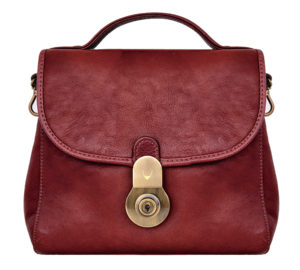 Corporate leaders, aspiring graduates straight out of business schools, and young housewives aspire to a brand that was once an outcaste from the mainstream market. But the values that inspired it to create Hidesign continue to guide. Its icon bags continue to be some of the most admired and beloved creations. They embody a brand philosophy that existed at our founding, and that is still in the brand’s hearts.
Corporate leaders, aspiring graduates straight out of business schools, and young housewives aspire to a brand that was once an outcaste from the mainstream market. But the values that inspired it to create Hidesign continue to guide. Its icon bags continue to be some of the most admired and beloved creations. They embody a brand philosophy that existed at our founding, and that is still in the brand’s hearts.


